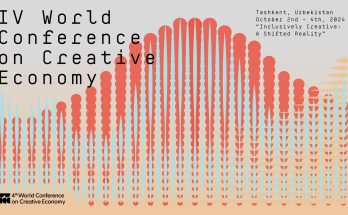 The Indian American community is feted for its achievements in myriad fields. But their contribution to India’s freedom struggle is not adequately recognised or appreciated. An exhibition at the National Archives in Delhi, which commemorate the Ghadar movement in its centennial year, seeks to address this knowledge gap by vividly evoking key moments in the revolutionary movement in the early decades of the 20th century.
The Indian American community is feted for its achievements in myriad fields. But their contribution to India’s freedom struggle is not adequately recognised or appreciated. An exhibition at the National Archives in Delhi, which commemorate the Ghadar movement in its centennial year, seeks to address this knowledge gap by vividly evoking key moments in the revolutionary movement in the early decades of the 20th century.
The exhibition brings together archival records, museums and material from private collections to chronicle the Ghadar movement – an armed struggle that forced the British to put into use all their resources of spies and intelligence gathering to foil the rebellion.
Another forgotten aspect of the history of Indians in America was the discrimination and restrictions they faced in the United States. Canada had imposed restrictions on the entry of Indians and the US was inclined to do the same. In 1914, in the infamous Komagata Maru incident, the British Columbia authorities refused entry to the chartered ship of that name, and turned away the ship carrying Indian passengers without even allowing it to be refueled.
 An extract from the Annual Report of the US Commissioner-General of Immigration of 1911, entitled Hindus (as Indians were termed) stated: “The US can well afford to deny entry to a class of labourers who are refused admission by a sister colony. We have race troubles of our own without permitting the Hindus to invade our shores. If permitted to come freely, we would certainly have an invasion. There are so many million Hindus in India that could spare as many as we now have people in the whole United States.” There was strong prejudice in the Pacific Coast against the Hindus, it added. Eventually, the US adopted regulations that barred Asian migration.
An extract from the Annual Report of the US Commissioner-General of Immigration of 1911, entitled Hindus (as Indians were termed) stated: “The US can well afford to deny entry to a class of labourers who are refused admission by a sister colony. We have race troubles of our own without permitting the Hindus to invade our shores. If permitted to come freely, we would certainly have an invasion. There are so many million Hindus in India that could spare as many as we now have people in the whole United States.” There was strong prejudice in the Pacific Coast against the Hindus, it added. Eventually, the US adopted regulations that barred Asian migration.
Indians had gone to America in the early years of the 20th century as students and unskilled workers but they faced strong discrimination and restrictions. It was to protest the discrimination that a small group of Indians living in San Francisco set up the “Hindustan Association of the Pacific Coast” in June 1913. They began holding discussions and sought to raise awareness among Indians through writing and publishing. In November 1913, the Association launched the inaugural issue of its newspaper called Ghadar. Their aim was a free India; later they began advocating an armed revolution. The Ghadar party as it came to be known had as its president, Baba Sohan Singh Bakhna and Lala Har Dayal as its general secretary and editor of the Ghadar magazine.
 Ghadar was a revolution that spread around the world to most of the countries where Indians had settled. From San Francisco to England, France, Germany, Japan, China, the Philippines, Fiji, the Caribbean colonies, East Africa and Latin America, the Ghadar ideals found adherents and supporters who contributed to the cause of India’s freedom a hundred years ago.
Ghadar was a revolution that spread around the world to most of the countries where Indians had settled. From San Francisco to England, France, Germany, Japan, China, the Philippines, Fiji, the Caribbean colonies, East Africa and Latin America, the Ghadar ideals found adherents and supporters who contributed to the cause of India’s freedom a hundred years ago.
The evocative prose and powerful poetry of the Ghadar writers aroused patriotic sentiments among Indians worldwide. One of the pamphlets that was sent to India for distribution exhorted Indians, saying that 56 years had elapsed since the mutiny of 1857 and “another is urgently needed.” It pointed out that the strength of the English army was merely 79,614 officers and 38948 volunteers (soldiers).
Such was the impact of the stirring words that a British official made a plaintive complaint in a confidential memo: “India is inundated with highly seditious, revolutionary, anarchical and murderous newspapers and pamphlets emanating from Har Dayal. The flood of literature is sometimes accompanied by the most inciting private letters from Indian immigrants.”
The armed rebellion was launched in late 1914 just after the beginning of World War I. The Ghadar leaders made contact with other Indian revolutionaries in Punjab, Bengal and the United Provinces. Hundreds of Ghadar activists reached India and fanned out to the villages. But their plans were discovered and their arms consignments were seized at the customs. A special tribunal was set up to try the revolutionaries and most of them were sentenced for life or transported.
The Ghadar revolution is sometimes referred to as a Punjabi revolution as many of the Ghadar leaders and supporters were from Punjab, but the movement had a much wider base. The Ghadar newspaper was published in English, Urdu, Hindi, Gurmukhi, Marathi, Bengali, Pushto and Gujarati. The Ghadar Party publications that were proscribed by the authorities in India included Ghadar, Sansar, Azadi ki Goonj, Dhandora, Kirti Leher and Shabash. The ‘Panda Maram’ or Ghadar newspaper was seized in Georgetown, Demerara (now Guyana).
Among the rows of photographs of Ghadar activists is a striking image of Bibi Gulab Kaur who helped in the distribution of arms and literature in the Philippines.
The month-long exhibition in Delhi will hopefully inspire many Indians about the forgotten heroes and their attempted revolution, and the stirring words that awakened their Indian compatriots to the colonial oppression a century ago.
(Shubha Singh is a senior Indian journalist and the author of Overseas Indians: The Global Family)
Author Profile
Latest entries
 DiasporaOctober 27, 2014Why PM Modi’s voyage to Fiji matters
DiasporaOctober 27, 2014Why PM Modi’s voyage to Fiji matters CultureMarch 28, 2014Remembering the spirit of Ghadar revolution
CultureMarch 28, 2014Remembering the spirit of Ghadar revolution CultureSeptember 27, 2013Indian Americans: A Winning Journey
CultureSeptember 27, 2013Indian Americans: A Winning Journey CultureSeptember 23, 2013A passage to India: From Guadeloupe, with memories and longing
CultureSeptember 23, 2013A passage to India: From Guadeloupe, with memories and longing







